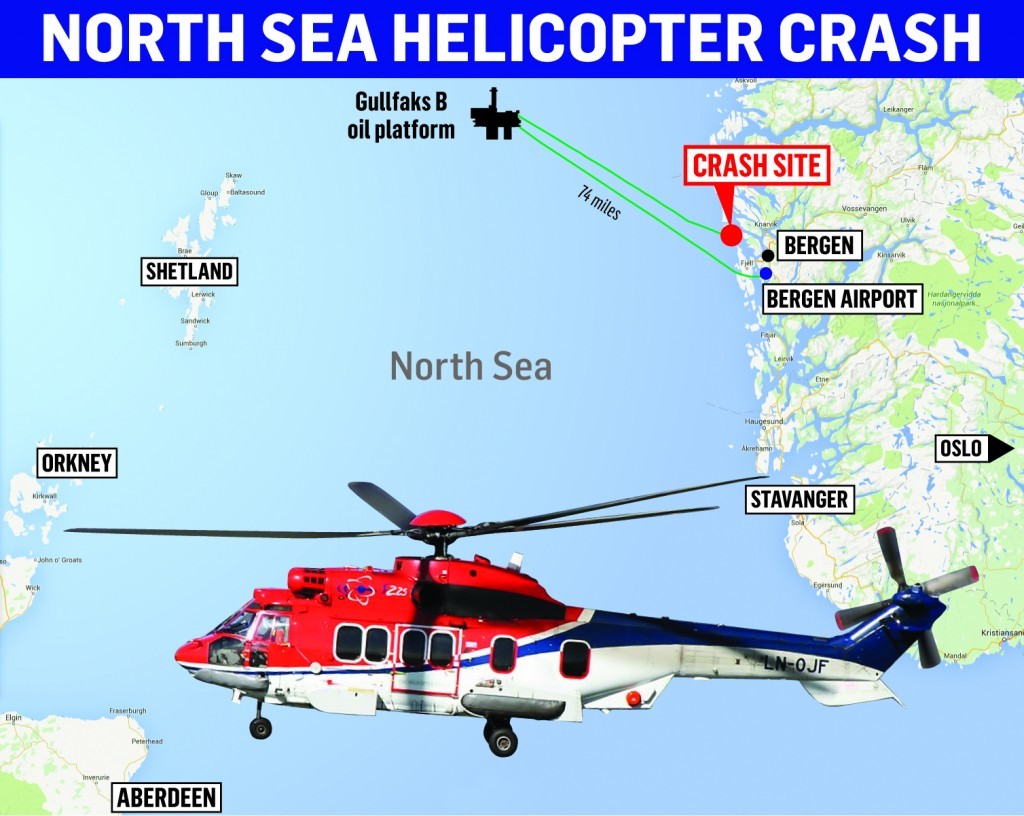
On April 29 ,2016, an Airbus Super Puma 225 helicopter crashed off the coast of Norway. All 13 people on board died in the accident, which has been subject to a year long investigation that is still ongoing. As the 12 month anniversary approaches Norwegian crash investigators are preparing to release an interim report into the tragedy.
The latest North Sea helicopter tragedy unfolded on April 29, 2016. The first reports showed that a CHC aircraft carrying 13 people had been returning from Statoil’s Gullfaks B when it suddenly plummeted to the ground.
The helicopter came down on a sector of the Norwegian coast, 23km from Bergen airport.
Police spokesman Morten Kronen said the helicopter “has crashed, it is totally smashed”.
He added that there were “reports of an explosion and thick smoke” and that there were people in the sea.
Mr Kronen said the crash took place on the island of Turoy, near Bergen, and did not explain why people had ended up in the water.
Read more about the initial response here.
Norwegian operator Statoil cancelled all helicopter traffic following the fatal crash
Norway’s Prime Minister described the news of a North Sea helicopter crash as “horrifying“.
It quickly emerged that the helicopter dropped 2100 feet in the last 10 seconds of the flight.
Video footage then appeared of the incident:
In the wake of the accident the Civil Aviation Authority grounded the entire fleet of Super Puma EC225s operating in the UK.
A Scottish man was later named as on of the passengers killed in the helicopter crash.
Iain Stuart, 41, was from Laurencekirk, Aberdeenshire, and worked for Halliburton.
A statement released by relatives of Mr Stuart said: “We as a family are devastated at the loss of Iain in Friday’s tragic helicopter crash in Norway.
“Iain was a loving husband and devoted father to his two children and as a family we are heartbroken. He was a caring son, brother, uncle and friend to many.”
Norwegian investigators later said no mayday calls had been made before the aircraft came down.
The European Aviation Safety Agency (EASA) issued an emergency directive calling for immediate inspections on the gearboxes of all EC225s before they fly again.
In a matter of days a petition calling for the Civil Aviation Authority to permanently remove the Airbus EC225 Super Puma from service reached more than 18,000 signatures.
Crash investigators quickly ruled out ‘human error’ and said initital evidence pointed to a technical issue.
In June, the AIBN published a preliminary report detailing fatigue in the gearbox and a “catastrophic failure”.
The Norwegian Civil Aviation Authority decided to suspend all use of 225s on the back of the report.
The UK CAA followed suit soon after.
A month later, the Norwegian Government said it had pledged more money to help the AIBN with its investigation.
Sikorsky helicopters flew into void left by Super Puma during the grounding.
All Sikorsky S92 helicopters returned to base following a probe into a recent incident on a North Sea platform.
This raised fears over the lack of a resilience fleet.
Divers found a “vital” missing part from the Super Puma helicopter back in March.
Recommended for you
